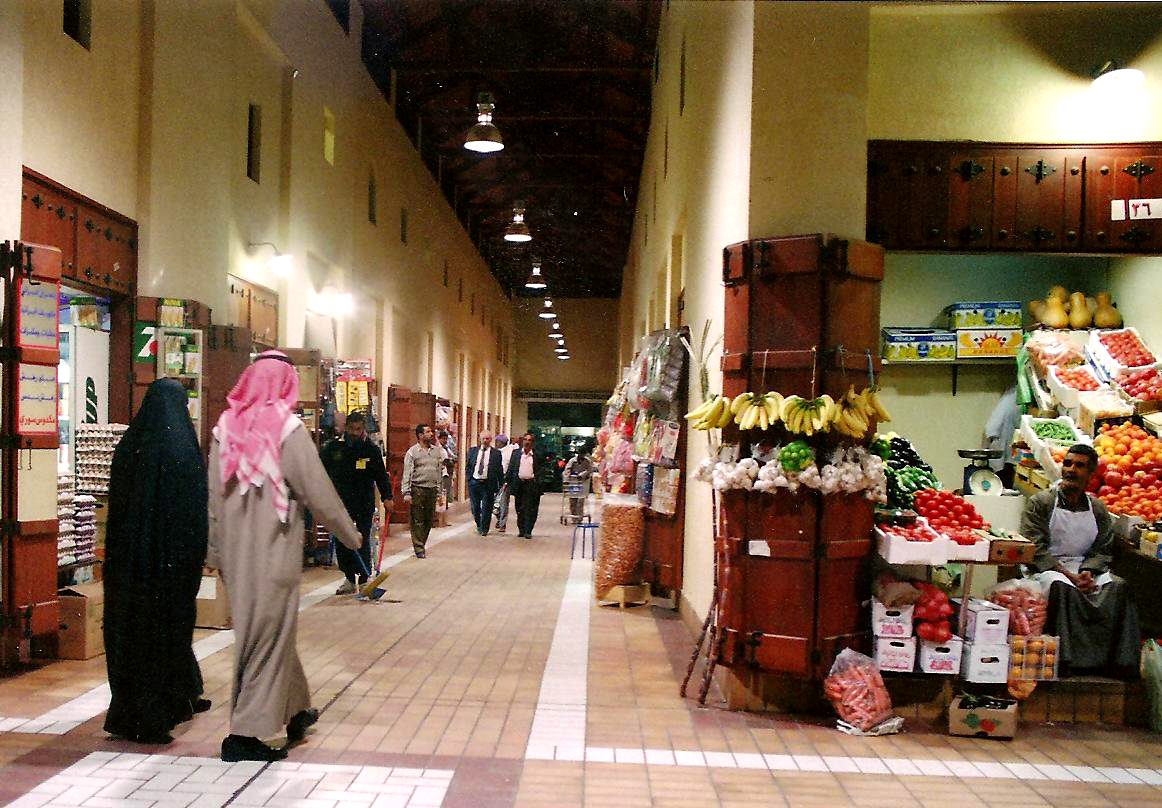LOC11:08
08:08 GMT
 Souk Al-Mubarkiah
Souk Al-Mubarkiah
(with photos)
KUWAIT, May 4 (KUNA) -- Modern construction has mushroomed in Kuwait
removing ancient and old buildings and sites, including the famous walls, but
there are some places that retain genuine identity and heritage of the
country, such as Souk Al-Mubarkia, situated a stone's throw from high-rise
buildings that house main monetary institutions.
Aroma of spices, herbs and incense distinguish the vast shopping market of
snaking alleys, lines of stores and stands, displaying perfumes, tea, coffee,
kitchenware, fish vegetables, shoes, clothes and accessories.
The souk was named after the late ruler, Sheikh Mubarak Al-Sabah, said the
researcher, Mohammad Jamal, in remarks to KUNA.
One of the oldest sections of the souk is al-Gharballay market that
stretches to Abdullah Al-Salem Street. It is adjacent to "Al-Magasees" souk
where items are sold at prices lower than those offered at other stores.
Other souks at the shopping place are the souks of arms, al-manakh,
al-beshoot, al-jet, sweats, meat and vegetables.
The municipality has carried out diverse changes in features and
organization of Al-Mubarkia Souk, such as blocking traffic to some of its
alleys to restrict movement for pedestrians, organizing exits and entrances to
the market.
In the old times, the market place was formed of shacks and vendors'
stands. The first shack, locally known as kichk was built by the late Sheikh
Mubarak Al-Sabah. It was located at the eastern entrance of the vegetable
market, where the ruler used to meet citizens directly to listen to their
problems and requests.
The sheikh used to interact with the ordinary citizens at two shacks. One
of them was recently renovated. And, the late ruler used the old office of the
municipality, before it was demolished.
The internal market, one of the main sections of the location and the
oldest of the markets, had existed for 250 years, and was known as a booming
shopping place during era of the late Sheikh Mubarak Al-Sabah.
Jamal said Al-Gharabally market, once covered with palm leaves, used to
include eggs' stores, in addition to various other goods.
Al-Manakh market was known as destination site for camel caravans, carrying
diverse products from the Levant, Iraq and Al-Ihasaa. Its name was derived
from the Arabic term, "Nakha," used in reference to a camel in a sitting
posture. Later, it was known as the stock market and till today it included
offices for investors, stock and real-estate dealers.
Other attractive parts of the market is souk Al-Beshoot, the traditional
dress worn by men in the Gulf region. In other sections of the location,
dealers trade in traditional and ancient sweats, such as muscatiah and Rahash
As to the meat market, Jamal said it was built in 1894 during era of the
sixth ruler of Kuwait, the late Sheikh Mohammad Al-Sabah.
The arms market still exists nowadays, with about 25 stores, some for
repairing damaged guns. (end)
mf.tb.rk
KUNA 041108 May 12NNNN